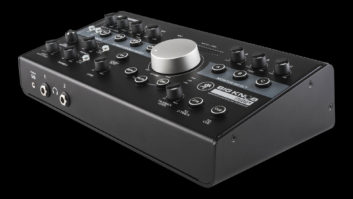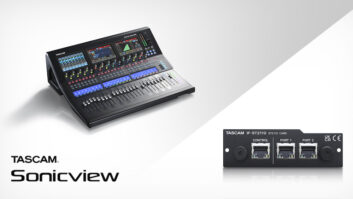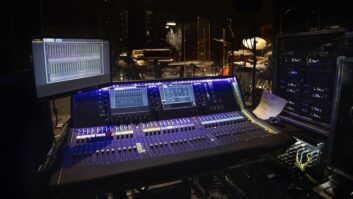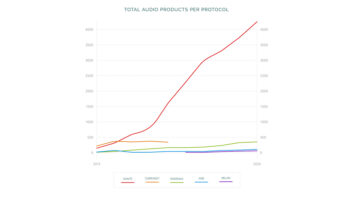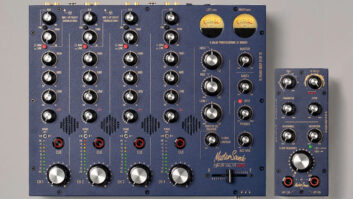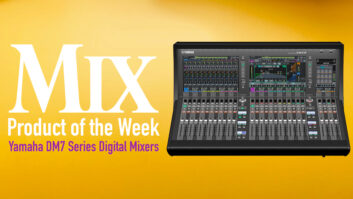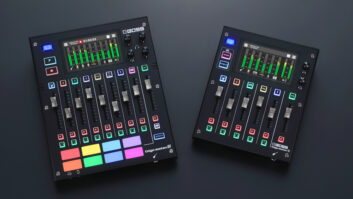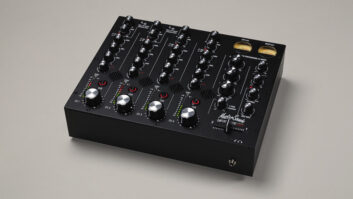Everyone from savvy self-mixing musicians to discriminating club, house-of-worship and theater-based audio engineers recognizes the irony of today’s smaller mixers and their larger-than-life capabilities and feature sets. Sure, many of us still pine for large, traditionally styled mixers built around dedicated, per-input channel strips, physical knobs and faders. Yet most are considering and subsequently buying what are essentially smaller touchscreen-equipped products and/or I/O devices that depend on wireless, GUI-centered third-party control (via touchscreens, smartphones and tablets). Or, feature-packed analog mixers with amazing built-in DSP are considerations. As such, the “incredible shrinking mixer” is a modern reality for a number of compelling reasons.
Today, all major manufacturers offer live digital mixers with built-in touchscreen control of key parameters, significantly increasing intuitiveness while saving valuable space both in use and in transit. Premium live mixing products such as Allen & Heath’s dLive, Avid Venue|S6L, all DiGiCo mixers, Harman’s Soundcraft Vi and Si, Solid State Logic’s Live, and Yamaha’s PM, CL, QL, LS9 and TF Series offerings, are built around the concept of “deep-menu’ed” manipulation via touchscreens paired with traditional faders. Thus, every manufacturer’s flagship console is considerably smaller than ever.
Here, we will examine burgeoning as well as recently unveiled products suited for either small-format installation or portable mixing purposes. Other than being built for live mixing use, all the following products share two other important characteristics: they are smaller and more capable than ever.
HIGHLY PORTABLE MIXING PRODUCTS
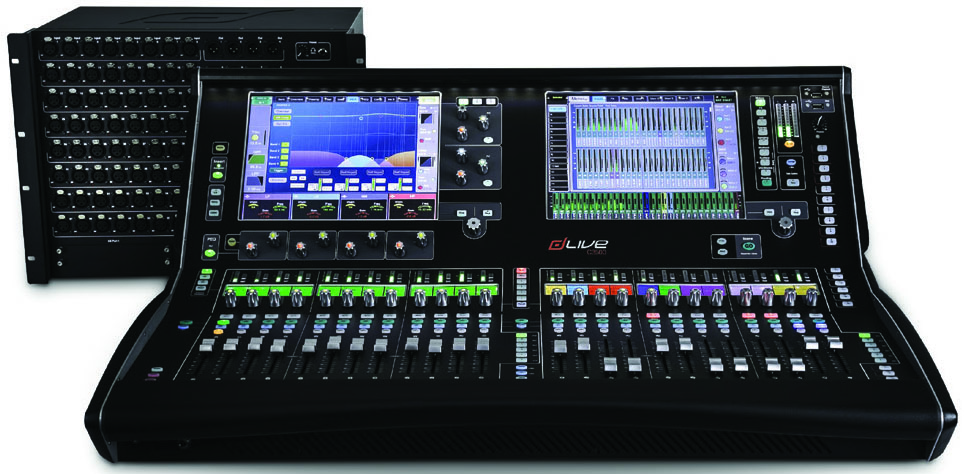
Making its Qu Series of digital mixers even more attractive to multitasking mixers on the go, Allen & Heath has announced the availability of the latest ProFactory channel libraries for the burgeoning line. Following collaborations with Shure, Sennheiser and Audio-Technica, the new presets cover a range of popular sE Electronics microphones, including the V3, V7, VR, 4400a and RNR1. ProFactory Mic Presets offer engineers a parameter-based starting point “to get the best possible sound quickly and easily.” The team at Allen & Heath worked closely with sE Electronics sound engineer Frederik Brandt Jakobsen, who developed the optimal settings for each microphone and instrument combination.
For mid-level live mixing, lines such as PreSonus’ popular StudioLive Series allow users to enter the hybrid physical/virtual touch world at even smaller sizes and lower price points. Such options incorporate neat wireless features for engineers to move about the venue via third-party GUI control and allow multiple monitor mix control onstage by musicians, not to mention multitrack recording capabilities via USB at the physical work surface itself.
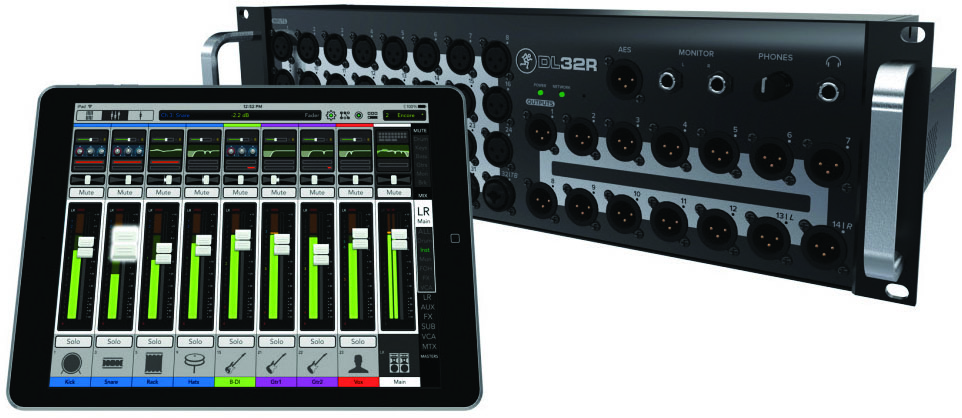
Notably, manufacturers such as Mackie—having built affordable, fully analog mixers for decades—are now simultaneously offering digital mixers with neither mix surface nor proprietary GUI whatsoever; these products depend on third-party tablets or phones. Starting with the DL1608 and DL806 paired with an iPad, and continuing with the small-to-medium scale tour-ready DL32R, Mackie’s GUI mixers have found enthusiastic users and engineers in a broad range of environments—clubs, houses-of-worship, theaters, and more—where untethered mixing is particularly appealing.
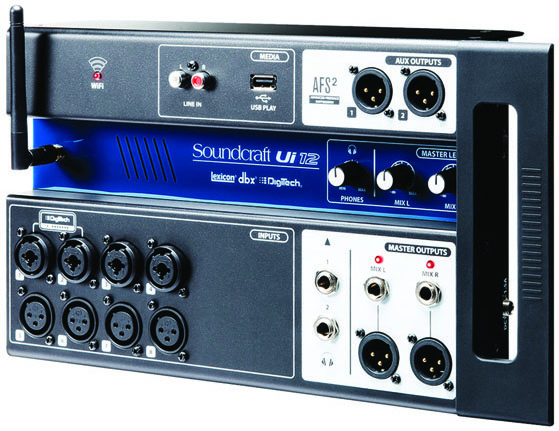
Other manufacturers have followed suit: Case in point, Soundcraft’s Ui Series now offers up to 24 channels of digital mixing with multitrack recording via USB, and is uniquely controlled via iOS, Android, Windows, Mac OS or Linux browsers—no proprietary app required.
Yamaha’s TF Series now boasts the TF-RACK, a compact and rackmount version of its TF Series of digital mixing consoles, offering every single feature of its TF Series desktop models, just accessible via third-party GUI. Yamaha specifically notes that it is intended for smaller-scale or portable mixing applications—“particularly when a proper mix position may not be available.”
Going even smaller and more affordable, products such as Mackie’s ProDX Series—comprising the 4-channel ProDX4 and 8-channel ProDX8—offer low-channel-count wireless control and streaming, processing and connectivity in a piece of hardware not much larger than your fist. In particular, a ProDX can be controlled by either iOS or Android devices, allowing an engineer to be easily confused with someone simply texting in the audience. And—though they are classified as monitoring devices—Mackie’s Big Knob Studio and Big Knob Studio+ include a 2×2 and 2×4 USB recording interface, respectively; such offerings continue to redefine the concept of small mixing or I/O products.
Yet the epitome of the “incredible shrinking mixer” must be Roland’s new USB-powered GO:MIXER Smartphone Audio Mixer. Though GO:MIXER is more of a savvy idea-capturing tool than an active mixing tool, it well symbolizes our industry’s constant progression toward smaller and smaller gear; at 4 ounces in weight, 3.75 inches square and 1-inch tall in size, it is smaller than most microphones. As a matter of fact, it’s so cheap ($99 street) and tiny, I bought one on a whim in order to have an eight-input device/small mixer in my pocket.
SMALL BUT MIGHTY MIXERS: INSTALLATION
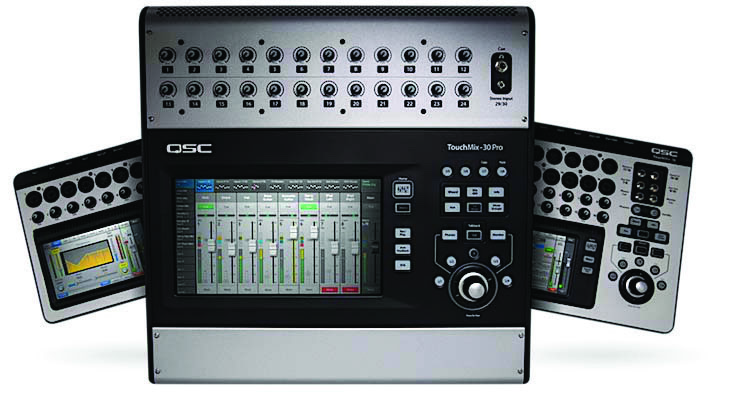
Though it provides no surface-mount faders, the QSC TouchMix Series’ largest model—the 32-channel TouchMix-30 Pro—includes a 10-inch touchscreen at the user’s left and a notably ergonomic physical button array, plus a central “touch and turn” encoder knob on the right. Its setup is user-friendly and remarkably intuitive. As such, the QSC TouchMix Series may be easy to transport, but it’s also a wise consideration for small/midsized installation applications, too, such as HOWs and theater environments.
When recently reviewing the 32-channel TouchMix-30 Pro at both a local church and municipal theater, with casual auditions by largely volunteer staffs, I was able to observe the short time in which novice users were able to understand the workflow and dial in results. Almost to a person, these users—both in the HOW and theater groups—noted that the QSC was “simple.” I chalk this up to its GUI appearing and behaving similar to a mobile phone’s interface. “This one doesn’t scare me,” was my favorite quote from one particularly enthusiastic church mixer.
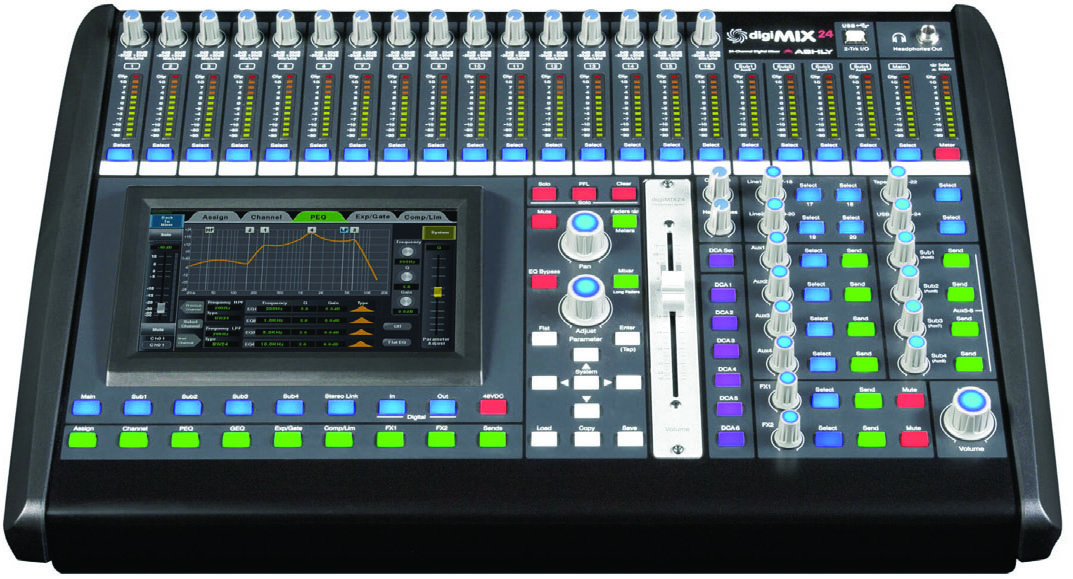
Also well-suited as a small-format installed mixer, Ashly’s digi-MIX24 is a 24-channel/14-bus digital mixer with a live control surface, 32-bit/48kHz fidelity, option cards for 32 channels of USB and Dante connectivity, and more. Its new digiMIX24 firmware update (v4.3) includes new functions—AutoMix and Crossfade Mode. AutoMix gain sharing allows for applications where multiple microphones are active and used simultaneously. Crossfade Mode is intended for engineers who require a live transition/crossfade operation between two selectable sources (mono or stereo mixer channels). Other improvements include Intelligent Meter Bridge showing Mute Status per channel, and enhanced Stereo Channel Link function.
Though it is on the higher end of the mixers we are examining here, DiGiCo’s new SD12 compact console is a super-affordable option for the brand. The SD12 provides key features of dual 15-inch touchscreens; built-in recording interfaces, allowing streamlined Virtual Soundchecking; DVI output; new LED metering; SD12 Lightbar as in DiGiCo’s SD5 and flagship SD7 consoles; two assignable master faders; and more. I/O includes eight local mic/line inputs; eight local line outputs; eight mono AES/EBU; dual MADI; dual DMI card slots; optional dual Optocore loops; UB MADI 24-channel USB interface; 16 GPI/GPO, MIDI, wordclock; and overview monitor output.
Aimed at the professional production and install markets, Mackie’s new AXIS Digital Mixing System brings together the 32-channel DL32R digital mixer with the DC16 control surface to create a system intended for houses of worship, performing arts centers and other small to midsized venues with advanced production needs. With 32 remote-controllable Onyx+ mic preamps and 16 outputs paired with built-in DSP, the system is intended for medium and large channel count live sound production and system integration applications. The system relies on Dante for communication between the DL32R mixer and DC16 control surface, enabling additional networking capability. Visual feedback is provided by large, full-color channel displays.
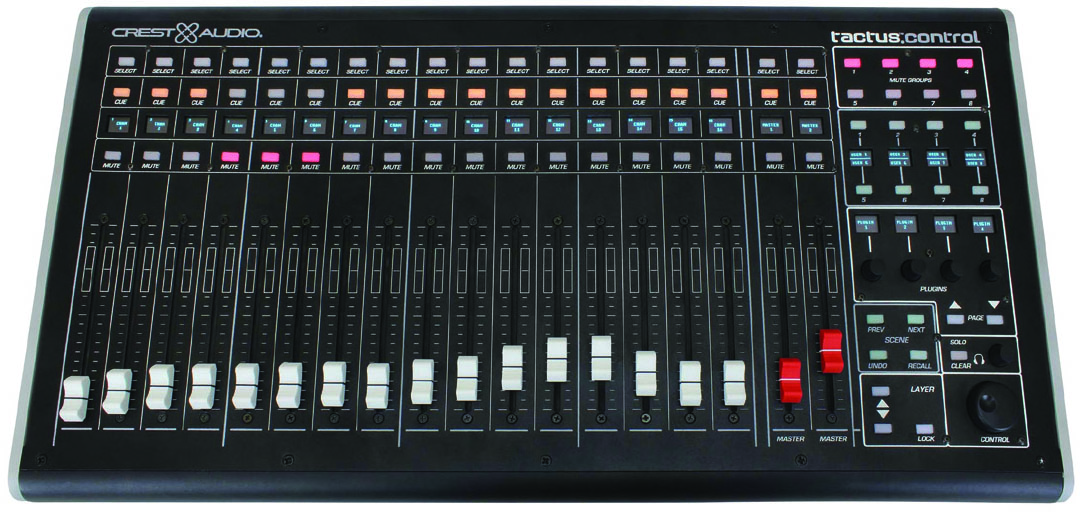
Crest Audio, a division of Peavey Commercial Audio, has announced the impending shipment of its Tactus Digital Mixing Systems. Crest partnered with Waves Audio to create Tactus, a modular touchscreen mixer, processor and controller incorporating Waves’ eMotion LV1 software. Tactus is centered on a streamlined yet customizable touchscreen-controlled GUI that displays all audio routing, processing and mixing tools at hand. Designed to work with the Waves eMotion Mixer for SoundGrid, Tactus obviously allows the use of Waves plug-ins for live events, all running via Windows or Mac OS with one, two or three incorporated multitouch screens.
Utilizing the SoundGrid audio network protocol and connected via standard Gigabit Ethernet cable and internal Gigabit switch, the Tactus range includes three hardware products: Tactus.FOH, Tactus.Stage and Tactus.Control.
Tactus.FOH is the Waves SoundGrid-based audio signal processing engine for the system, providing eight local mic/line inputs and eight line outputs plus two AES outputs. Tactus.Stage is a 32-in/16-out remote stage box that can be linked with an additional Tactus.Stage I/O for a total of 64 stereo inputs by 32 stereo outputs. Available soon, Tactus.Control will be a 16-channel surface featuring dual-motorized master faders with mute, cue and select buttons along with a multiline scribble strip display, which complements eMotion LV1’s GUI via lighted buttons and knobs for most commonly used functions.
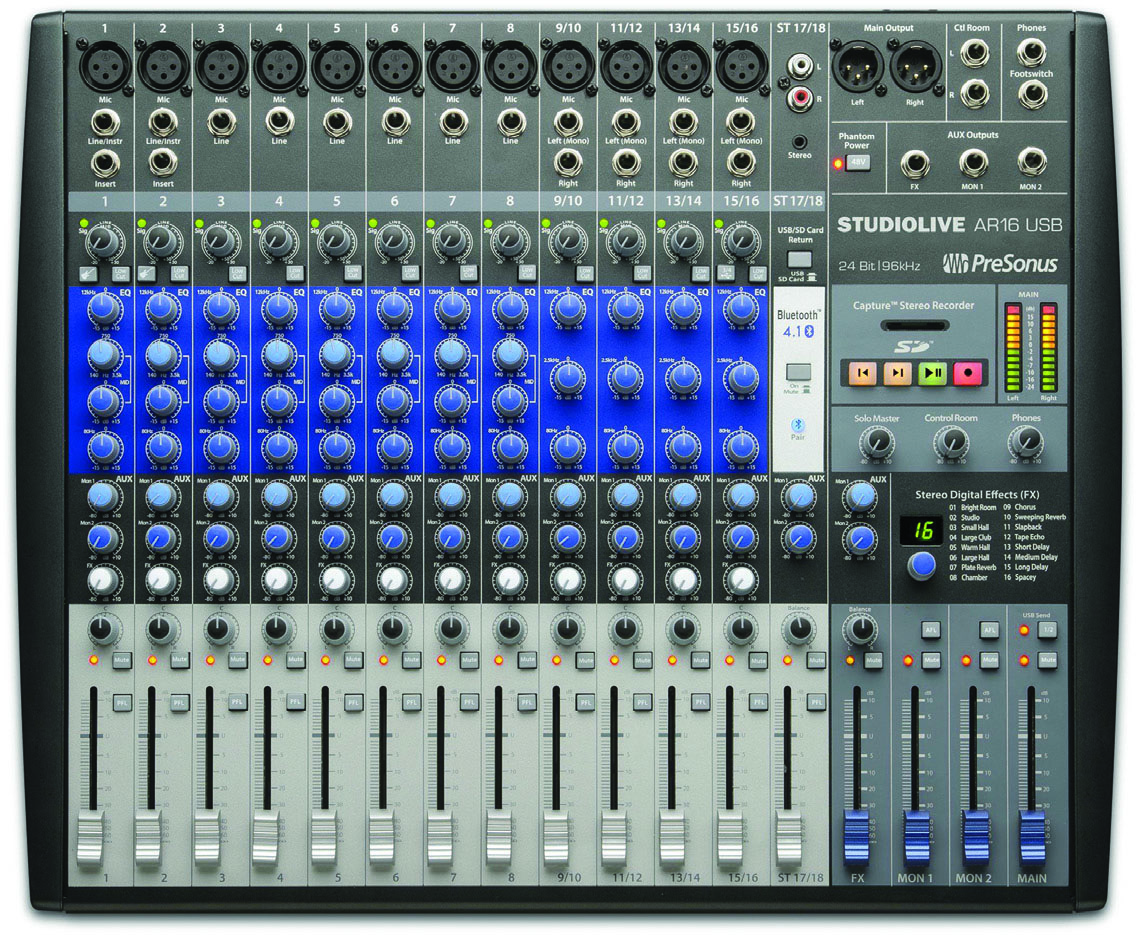
PreSonus’ latest StudioLive Series III digital mixers in rack form can serve as simple AVB stage boxes—networkable via CAT5e or CAT6 Ethernet cable—combination stage boxes and monitor mixers, or powerful standalone mixers. Essentially, they are useful just about anywhere live mixing is the task.
StudioLive 32R and StudioLive 24R offer 26 mix buses, including 16 FlexMixes, four dedicated subgroups, four internal effects buses/processors, and the stereo main mix bus. The StudioLive 16R has six FlexMixes, two effects buses, and the stereo main bus for a total of 10 mix buses. The StudioLive 32R and 24R have 24 Filter DCAs for controlling groups of channels; the smaller rack mixer offers eight Filter DCAs. An AVB Ethernet connection enables users to network compatible computers and stream up to 55 (StudioLive 32R and 24R) or 32 (StudioLive 16R) channels of audio to and from a Mac or Windows PC. Further, 40×40 (StudioLive 32R and 24R) or 18×18 (StudioLive 16R) recording via USB 2.0 is available.
Harman Professional Solutions’ mixer offerings under the Sound-craft banner range from small and “backpack-portable” to world-class large touring mixers. As of late, though, the company has exerted a lot of energy in developing smaller-than-ever products, no matter the environment. For example, Soundcraft’s new Notepad mixers—Notepad-5, 8FX and 12FX—are flexible analog mixing surfaces that include comprehensive analog I/O, as well as USB I/O, Harman DSP (including Lexicon reverbs), chorus and delay with tap tempo control, and more.
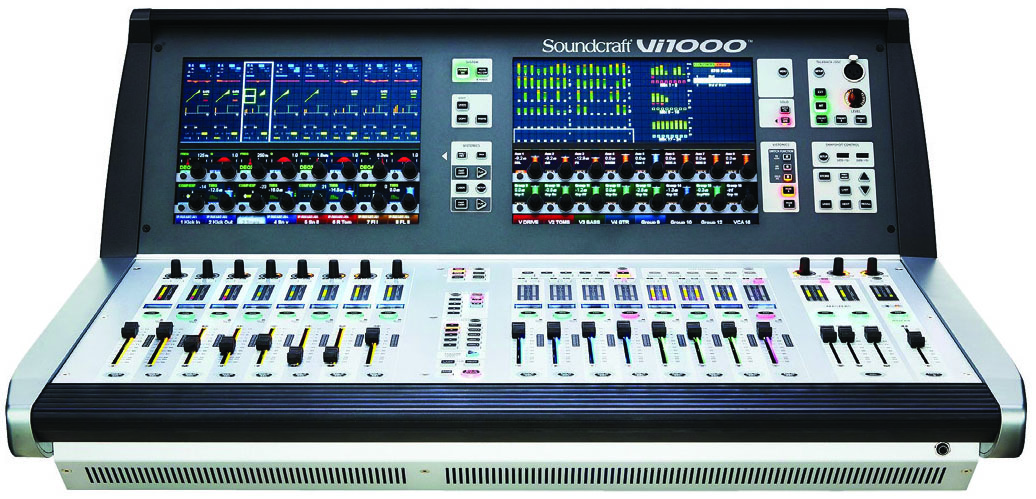
Meanwhile, Soundcraft has announced the Vi1000 Digital Mixing Console. Created to be the most compact Vi Series desk, sitting 34×32 inches, the Vi1000 retains Soundcraft’s Vistonics II channel strip user interface based around FaderGlow, and also offers Soundcraft Spider-Core, a built-in DSP and I/O engine based on Studer technology with 40-bit floating point processing. The desk can be used on its own or as an additional remote-control surface for any of the larger consoles in the range, using their Mirroring feature. Onboard processing includes gating and compression on 96 channel paths, BSS DPR901ii Dynamic EQ and Lexicon multi-effects via an insertable processing pool, and the ability to insert up to 64 external devices. Studer vMIX automatic voice mixing is built in, and BSS 966 graphic EQs are available on all output buses.
So many Yamaha mixing products are worth consideration for installed applications. But what if you’ve desired the company’s flagship product yet always lacked the space for it? Wait no longer, because Yamaha’s controller for its Rivage PM10 digital mixing system is approximately two-thirds the size of the existing CS-R10 surface. Yes, the new CS-R10-S control surface offers the same operability for applications in a smaller footprint. A Dual Console function (to be supported in a future update) will allow two CS-R10 and/or CS-R10-S control surfaces to be connected to a single DSP-R10 DSP engine; this allows separate CS-R10-S control surfaces to be used at both front of house and monitor mix positions. Ideally, the CS-R10-S can be used as a sidecar for a CS-R10.
